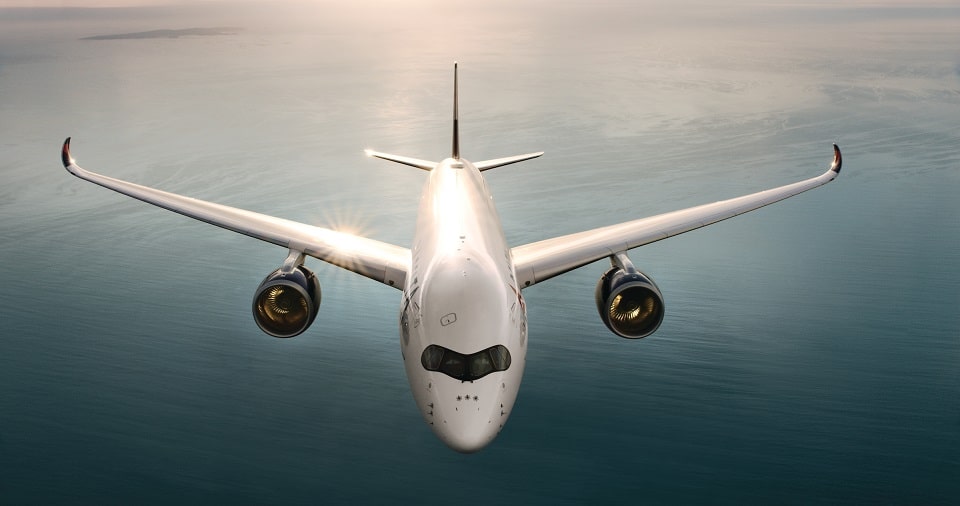Aerospace
The world’s largest engine manufacturer is set to establish an MRO facility in India.

It is typical for a company to handle product services when a product is sold in the market. What happens if the product costs millions of dollars and requires a significant amount of time to fix? Yes, we are talking about aircraft engines.
In a comparable way, India has recently experienced a rise in demand for aerospace parts as a result of an increase in aircraft orders.
This year, Air India placed a sizable aircraft order, choosing some of the engines from Boeing and Airbus models. The company has now decided to establish its own MRO facility in India in order to expedite and reduce the time needed for aircraft engine repairs.
Yes, we are referring to Rolls-Royce, the biggest manufacturer of aircraft engines in the world, which has experience producing everything from small jets to the biggest engines ever. According to Finacial Express , the company is currently considering opening an MRO set up in India.
Air India is considering its options for a maintenance, repair, and overhaul (MRO) center in the nation as it gets ready to introduce its first wide-body aircraft, which will be powered by Rolls-Royce engines.
Air India had placed an order for 68 Trent XWB-97 engines
Rolls-Royce revealed in February that Air India had placed an order for 68 Trent XWB-97 engines—plus options for an additional 20—to power the Airbus A350-1000. Additionally, 12 Trent XWB-84 engines—the only engine option available for the Airbus A350-900—were ordered by the Tata-controlled airline.
This is the first time an Indian airline has ordered a Trent XWB, and as a result of the agreement, Air India will become the world’s largest operator of Trent XWB-97s. Air India has ordered six A350-900 and 34 A350-1000 wide-body aircraft from Airbus. An Indian airline will be using an A350 commercial aircraft for the first time.
Engines require extensive maintenance protocols. Moving forward, we as engine manufacturers need to have a strong working relationship with Air India.
Rolls-Royce, unlike other manufacturers, is not taking any risks. In just two years, Pratt & Whitney engines caused several Indian airlines to experience problems. This prompted them to switch to alternative engines, much as Indigo Airlines did when it switched from Airbus to CFM engines. Currently, Rolls-Royce is receiving large orders from customers and improving smooth operations.
As of right now, Rolls-Royce maintains an MRO center in Singapore and China. It is currently intended to be built in India. This will have a significant impact on the Indian aerospace industry because it will draw in additional investors and strengthen the sector.
Due to a significant volume of orders from Indian carriers such as Air India, Indigo, and Akasa Air, some Boeing and Airbus are already planning to construct their engineering and maintenance centers in India.

Aerospace
Boeing Transfers Rocket Stage to NASA, Paving Way for Human Moon Mission

Boeing has achieved a significant milestone by providing NASA with the second core stage of the Space Launch System (SLS) rocket.
This crucial component, crafted at NASA’s Michoud Assembly Facility (MAF), is set to propel the Artemis II crew into lunar orbit, marking humanity’s return to deep space after a 50-year hiatus.
The monumental Boeing-built rocket stage, the largest element of the Artemis II mission, will embark on a journey aboard the Pegasus barge, traveling 900 miles to NASA’s Kennedy Space Center.
Comparison of two legendary aircraft B777x vs B747 aircraft:Click here
Upon arrival, it will be meticulously integrated with other essential Artemis II components, including the upper stage, solid rocket boosters, and NASA’s Orion spacecraft within the iconic Vehicle Assembly Building. This intricate integration process is a vital step toward the eagerly anticipated Artemis II launch, slated for 2025.
“Boeing-built products helped land humankind on the moon in 1969, and we’re proud to continue that legacy through the Artemis generation,” remarked Dave Dutcher, vice president and program manager for Boeing’s SLS program. “Together, with NASA and our industry partners and suppliers, we are building the world’s most capable rocket and paving the way to deep space through America’s rocket factory in New Orleans.”
NASA, Lockheed Martin Reveal X-59 Quiet Supersonic Aircraft:Click here
The delivery of Core Stage 2 marks a significant achievement in the evolution of the SLS rocket. Towering over 200 feet and powered by four RS-25 engines, this core stage, coupled with two solid-fueled booster rockets, will generate a staggering 8.8 million pounds of thrust. This immense power is crucial to launching Artemis II and future missions into the vast expanse of space.
The SLS rocket stands unparalleled in its capability to transport both crew and substantial cargo to the moon and beyond in a single launch. Its extraordinary capacity will facilitate the delivery of human-rated spacecraft, habitats, and scientific missions to destinations including the moon and Mars, ushering in a new era of space exploration.
-

 Travel1 week ago
Travel1 week agoAir India to Expand US Operations with Three New Routes After a Decade
-

 Travel2 weeks ago
Travel2 weeks agoWhy We Should Avoid These Stamps in a Passport
-

 Airlines1 month ago
Airlines1 month agoInvestigations Reveal Fake Chinese Titanium in Boeing and Airbus Jets
-

 Tech4 weeks ago
Tech4 weeks agoChina’s CATL Plans 1,800-Mile Electric Plane Launch by 2027
-

 Airport3 days ago
Airport3 days agoTop 10 Largest Airports in the World by Size
-

 Aerospace4 weeks ago
Aerospace4 weeks agoChina’s Fighter Jets Turn Wings into Autonomous Drones
-

 Airlines4 days ago
Airlines4 days agoAir India Rolls Out A350s for Delhi-New York JFK and Newark Routes
-

 Defence3 weeks ago
Defence3 weeks agoBoeing Enhances Chinook with New Engines and Block II Upgrades at $96 Million







